The Psychopath
(Behind the Mask. Image by Xtream_i via flickr CC BY-NC 2.0)
Mention the word psychopath and I think it's fair to say that most people think of serial killers both real and fictional. As with criminal profiling, this is a topic area within forensic psychology where it is often difficult to separate fact from fiction. Before we attempt to do this, however; first and foremost, I just want to quickly address the broader issue of personality disorder.
Personality Disorder
The first important thing to note is that psychopathy is a personality disorder, the diagnosis of which is usually based on in depth interviews with both the individual being assessed and their family. However, the concept of personality disorder is extremely controversial, so much so, there are those that argue that personality disorder is nothing more than a term used by the medical profession to describe people they don't like. For many mental health problems, psychological testing can be employed in an attempt to provide clear criteria as a basis for diagnosis, there are, however, no such tests for personality disorder per se, so any diagnosis is by definition unreliable and lacking in validity.
The situation in the UK is particularly confusing because although the 1983 Mental Health Act differentiates between 'psychopathic disorder' and 'mental illness, it classifies both under the broader term of 'mental disorder.' At best, personality disorder sits uncomfortably within the traditional medical model of psychiatric classification, and more often than not resides outside it. The most obvious consequences of this is that no medical treatment for underlying personality disturbance exists.
The debate surrounding personality disorder is complex and multi dimensional. Anybody interested in understanding this topic in greater depth is recommended to read Major Theories of Personality Disorder, Second Edition by Mark F. Lenzenweger & John F. Clarkin.
Book Description
Now in a fully revised and expanded second edition, this landmark work brings together in one volume the most important current perspectives on personality pathology. Chapters from leading experts have been extensively rewritten to reflect a decade's worth of significant theoretical, empirical, and clinical developments, and two entirely new chapters have been added.
Coverage encompasses psychodynamic, interpersonal, attachment, ecological, psychometric, and neurobiological models, all presented in a consistent format to facilitate ready reference and comparison. The volume also explores similarities and differences among the various theories, identifies potential avenues of integration, and discusses key implications for research and clinical care. You can buy this excellent book on Amazon via the following link.
Major Theories of Personality Disorder
Psychopathy Checklist
Although there isn't a rigorously tested and valid measure of personality disorder, there is, however, a psychological test for psychopathy. Developed by psychologist Robert Hare, the Psychopathy Checklist-Revised (PCL-R), is the standard instrument of choice for researchers and clinicians in the field.
The items within the PCL-R contain an interpersonal-affective component for traits like manipulativeness and callousness. As well as an antisocial component designed to examine such things as antisocial behavior and disinhibition.
Key Definitions
A primary aim of discussing personality disorder was to make it clear that a psychopath is not mentally ill in the traditional sense of the word.
A common mistake is to assume that the terms psychopathy and psychotic are interrelated; they are not. A psychotic individual is essentially out of touch with reality, she or he is likely to be delusional and experience hallucinations, and is, therefore, behaviorally speaking, completely unaware of what they are doing and why they are doing it.
Psychopathic behavior on the other hand is rational, it represents an informed choice, a premeditated strategy to act in way that serves as an effective means to an end. As Robert Hare states:
'Psychopaths are social predators who charm, manipulate, and ruthlessly plow their way through life, leaving a broad trail of broken hearts, shattered expectations, and empty wallets. Completely lacking in conscience and in feelings for others, they selfishly take what they want and do as they please, violating social norms and expectations without the slightest sense of guilt or regret'.
An extremely useful description of psychopathy is provided by The Society for the Scientific Study of Psychopathy (SSSP) in their statement that psychopathy is:
A constellation of traits that comprises affective features, interpersonal features, as well as impulsive and antisocial behaviors. The affective features include lack of guilt, empathy, and deep emotional attachments to others; the interpersonal features include narcissism and superficial charm; and the impulsive and antisocial behaviors include dishonesty, manipulativeness, and reckless risk-taking. Although psychopathy is a risk factor for physical aggression, it is by no means synonymous with it. In contrast to individuals with psychotic disorders, most psychopaths are in touch with reality and seemingly rational. Psychopathic individuals are found at elevated rates in prisons and jails, but can be found in community settings as well.
Historical Perspectives
Psychopathy, Antisocial Personality & Sociopathy: The Basics - A History Review
Very insightful article by Dr. Paula M. MacKenzie, Psy.D, Doctor of Psychology (Clinical & Forensic Psychology); the focus of which is:
To conceptually explore this distinctly different behavior and the psychopathy basics, so to speak, which center on behavioral phenomena that by its very nature is best described as toxic, parasitic, predatory and potentially destructive to others. Also explored is how the related concepts of psychopathy, antisocial personality, and sociopathy have been defined, confused, and subsequently misused.
You can read this excellent article in full via the following link.
Psychopathy, Antisocial Personality & Sociopathy
Early Reference
The following news article was published in The Pall Mall Gazette (London, England), on Wednesday 21st January 1885. It provides the first printed account of the term psychopath as we understand it today.
See following link for a fascinating article on psychopaths from 1935.
Calling All Mindhunters
A must read for anybody who would like to learn more about the darkest recesses of the criminal mind.
This book traces the origins and development of behavioral science within the FBI which has kept the iconic U.S government department at the forefront of research into serial killers and the criminal mind for over 40 years.
Inside The Criminal Mind: Behavioral Science Insights From The FBI also showcases a series of landmark articles on criminal profiling, sexual homicide, school shooters and serial murder. You can buy this fascinating book on Amazon via the following link.
Inside The Criminal Mind: Behavioral Science Insights From The FBI
Learn More About The Psychopath
See following link to read a great article on the differences between psychopaths and sociopaths by Xanthe Mallett, Senior Lecturer in Forensic Criminology at the University of New England.
See following link to read an excellent article by Scott Lilienfeld and Ashley Watts on psychopathic traits which are linked to success.
Not All Psychopaths Are Criminals
CLICK HERE to read the following articles on psychopathy published in the July 2012 edition of the FBI Law Enforcement Bulletin.
- Psychopathy: An Important Forensic Concept for the 21st Century By Paul Babiak et al.
- When the Stalker Is a Psychopath By Sharon S. Smith et al.
- Looking Behind the Mask: Implications for Interviewing Psychopaths By Mary Ellen O’Toole et al.
- No More Bagpipes: The Threat of the Psychopath By Matt Logan.
- The Language of Psychopaths: New Findings and Implications for Law Enforcement By Michael Woodworth et al.
Interested in Criminal Profiling?
Recent Articles
-
Hugo Munsterberg Forensic Psychology Pioneer
Jun 01, 25 04:21 AM
Hugo Munsterberg: On The Witness Stand: Essays on Psychology and Crime -
All About Forensic Psychology
Mar 13, 25 06:30 AM
A forensic psychology website designed to help anybody looking for detailed information and resources. -
Eyewitness Memory
Jan 21, 25 04:52 AM
Learn about the psychology of eyewitness memory and testimony


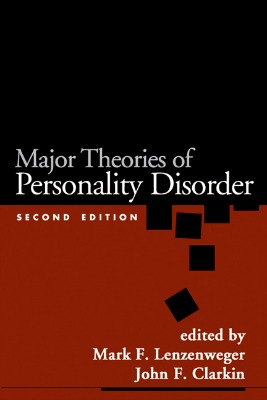
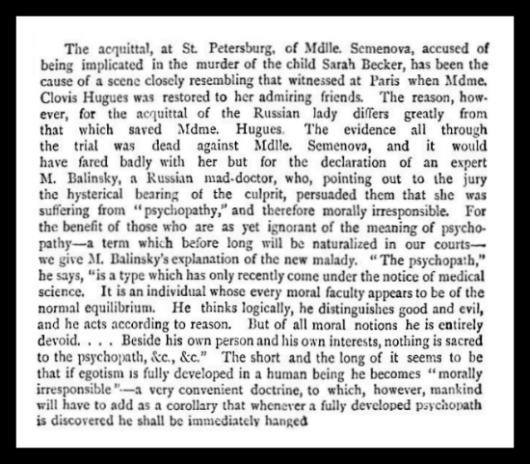

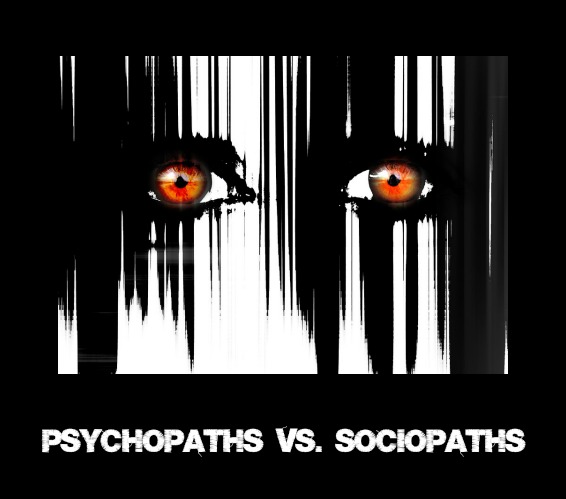

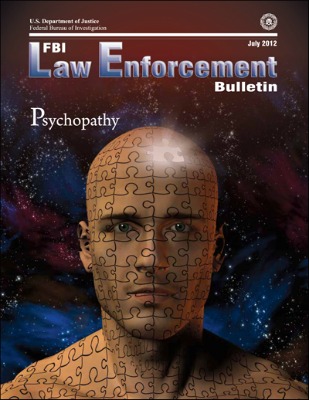
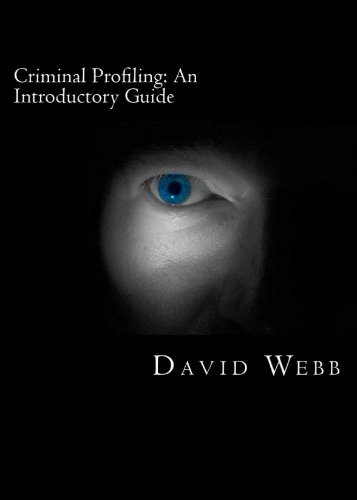
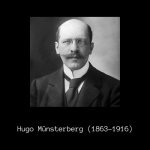
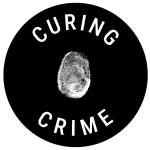

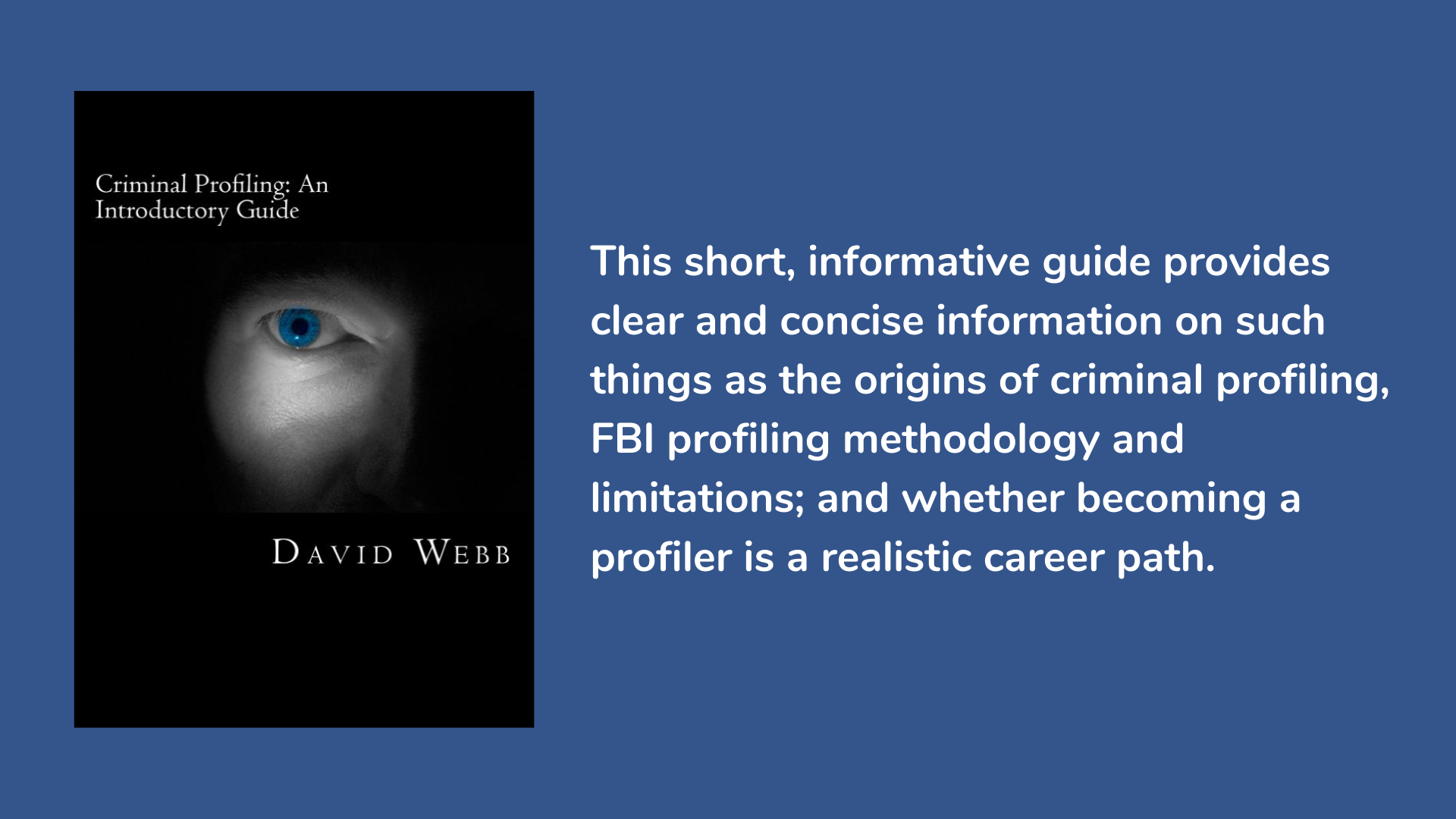
New! Comments
Have your say about what you just read! Leave me a comment in the box below.